Ross Lovegrove looks to F1 racing to inspire haute parfumerie
Industrial designer Ross Lovegrove on the process of creating a perfume bottle inspired by the cockpit cocooning a driver in an F1 racing car
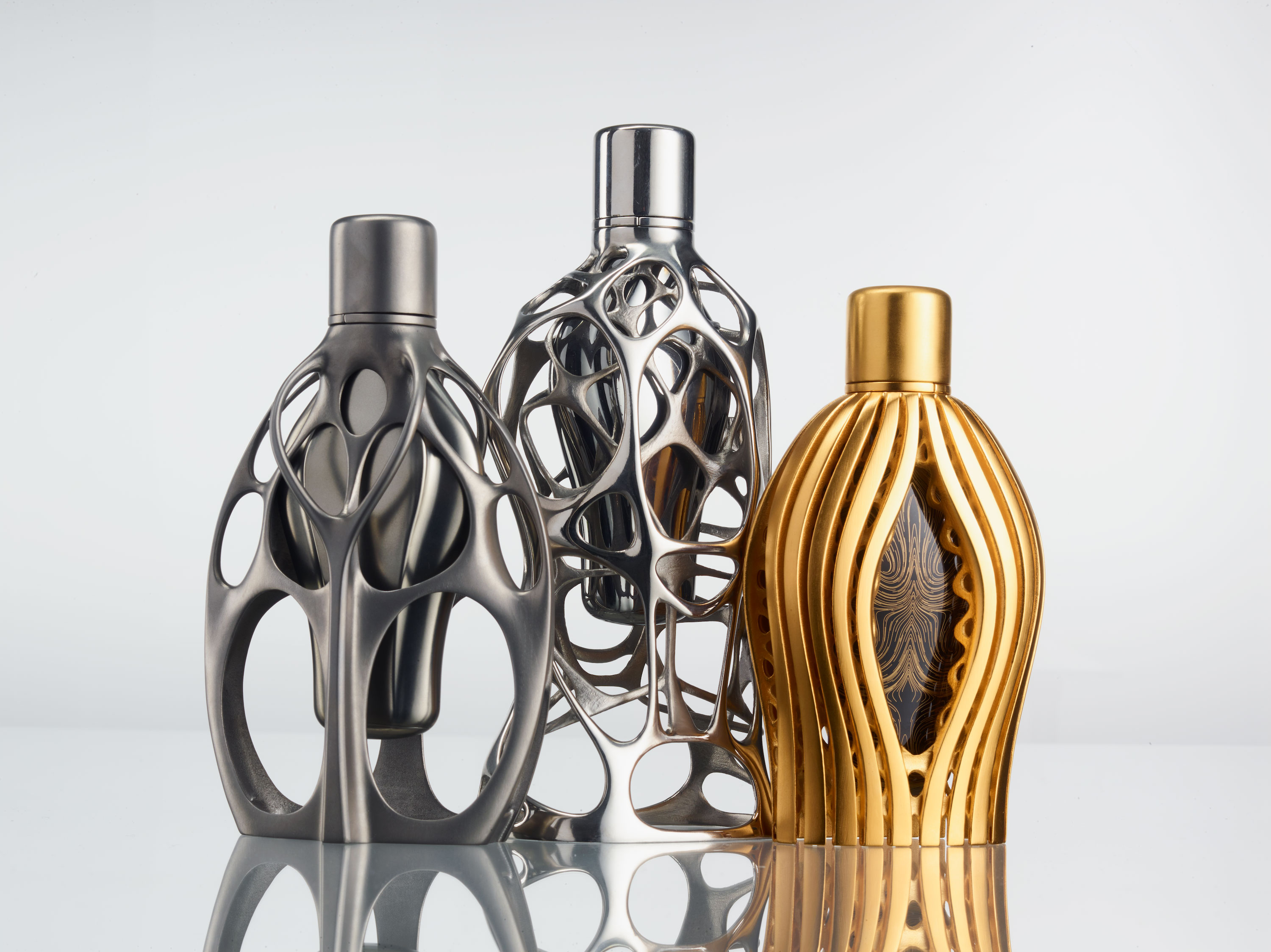
Formula One racing, the codes of nature and digital manufacturing have collectively informed the latest work by industrial designer Ross Lovegrove. The F1 haute parfumerie collection explores how 3D printing can be employed to create complex geometries and advanced sculptural forms. Lovegrove’s three renditions are digitally printed metallic exoskeleton figures enveloping a glass fragrance bottle to recall the wishbone-shaped cockpit cocooning the driver in an F1 racing car.
The perfume bottles continue Lovegrove’s search into the possibilities of generative design – unifying technology, materials science and organic forms as a way of creating a new aesthetic that feels biological rather than mechanical, and which speaks of this century. For a deeper understanding, Wallpaper* met with the Welsh designer at his Notting Hill studio in London.
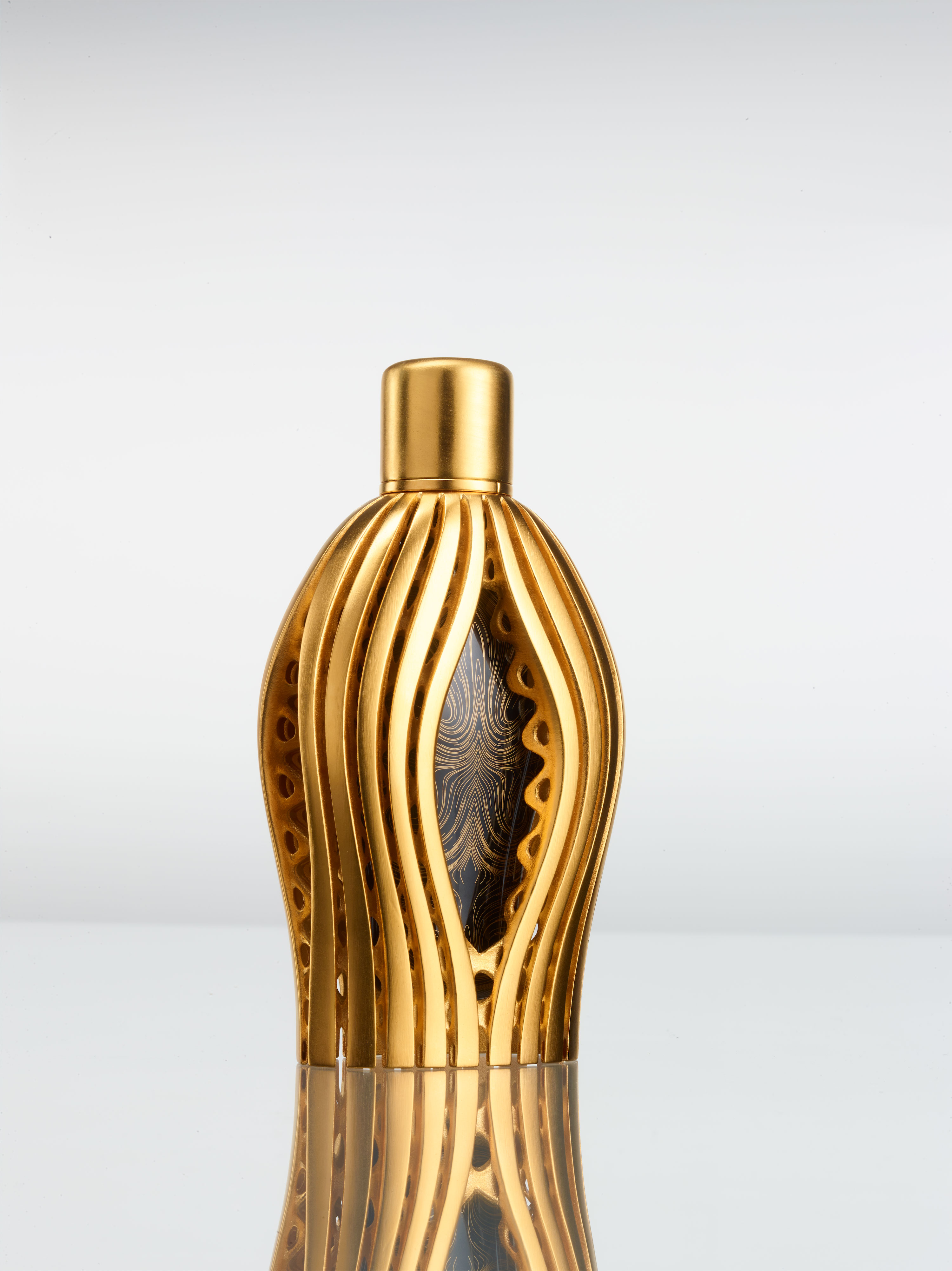
The F1 haute perfume by Ross Lovegrove is available in three designs. The gold 3D printed ‘Agile Embrace’ is based on principles of form created from flow; the lines embrace the inner core that contains the heart of the design - the perfume bottle.
Wallpaper*: You have created works as diverse as the Go Chair for Bernhardt Design, Renault’s Twin’Z concept and the Mumm Grand Cordon Champagne bottle. How did you become involved with conceiving the F1perfume?
Ross Lovegrove: The client, Designer Parfums, called me out of the blue and without much of a brief. The team came to our studio, I showed them previous designs with perfumeries, while explaining that I will not be repetitive, and certainly refuse to design a glass bottle with a funny flower shape on top. I was pretty frank, saying the perfume industry needs good innovation, and suggested they explore additive manufacturing. I could sense I was shooting myself in the foot! Then six months later they called to say they think I’ll be the perfect designer to work with.
W*: How did you approach such seemingly disparate worlds: motor racing and perfumeries?
RL: At first it did seem like an unusual marriage, but I could sense that this wasn’t a kitsch side-line project for Designer Parfums who had engaged a handful of some of the world’s finest perfumeries. They were clueless about what I proposed though; it was far too technical for them, so my studio took on everything - the design, manufacturing and product naming.
W*: You created a number of studies for the perfume bottle before coming up with three final designs. These are highly sculptural, digitally formed products, which by the nature of their complexity, are impossible to copy. What was your process?
RL: We started off looking at F1 cars – at how the airflow dynamics works, how spaceframes are created with almost biological forms, we even looked at the way the tyres grip the tarmac. From this we created these three prototypes - one with an almost organic art nouveau feel to it, another with blasted titanium, and a titanium gold-plated sculpture. All our studies are 3D printed and share a singular idea whereby the perfume flask is the pilot, the racing driver held in a form of suspension within the vehicle, as in the bottle. To me this is the most precious part - a biological human being. Our three designs are left raw too, so you can see the technology, the process and innovation. Like F1 cars, I wanted them to have an energy to them - have a life force.
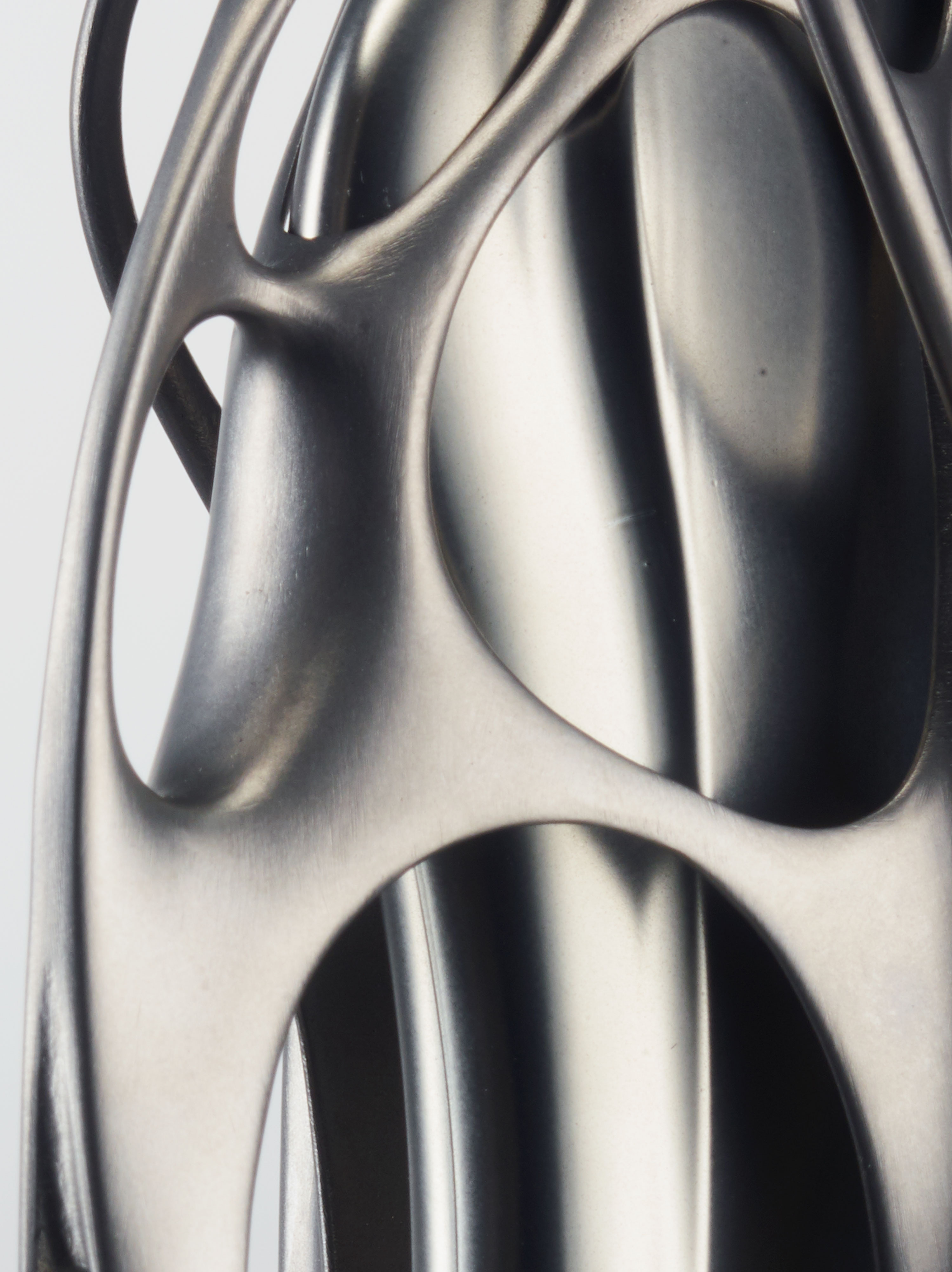
‘Fluid Symmetry’ is the second F1 haute perfume made of 3D printed blasted titanium and derived from the evolving organic lines of the cars aerodynamic design. The idea for Lovegrove is for the physics of natural forces, in unison with advanced materials, to produce a new form of technological bio-aesthetic for this century
W*: The technology behind the perfume bottles also speaks of the advanced spirit of motor racing, and in particular F1.
RL: Yes, every season F1 starts over again, with everything optimised for a gram or two of weight reduction in the cars. And then out of the blue comes this biomorphic, incredibly sensual object with veins at the bottom to promote downforce, and this wishbone-shaped cockpit to safely hold the driver! It proves what I’ve been pushing for over twenty years: organic design that is a consequence of instinctive thinking, and using new tools that are appropriate to the age we live in.
W*: These tools you describe are essentially cutting-edge 3D printing. How do you monitor the speed of technological change?
RL: We work with a network of the most advanced people here and in France, and my team are high-level generative designers, mainly architects who understand modern processes. This studio is one of the best by a longshot in the field of 3D printing. We are like an SAS unit. This perfume bottle is the result of two years solid work. We found the printing companies and we create all the data. At this level, the process is so intense, but you create things that are very enriched and formally really beautiful and complex in a sculptural sense. You see this kind of high-level digital design only in architecture – think of Zaha Hadid’s magnificent Beijing (Leeza Soho) tower.
W*: Is this where you position your work?
RL: Yes, this is where I want to be. The new energy, the new aesthetic is this freedom, where everything and anything is interrelated - the materials, the science, the generative design, the data generation. And they all contribute to creating what you want. Then on a higher level, F1 represents progress - it is about lean, fat-free efficiency without giving up the emotional side. To me it doesn’t matter if we’re working on a big or small commission; my role is to capture the imagination of an object, and to give it life.
Receive our daily digest of inspiration, escapism and design stories from around the world direct to your inbox.
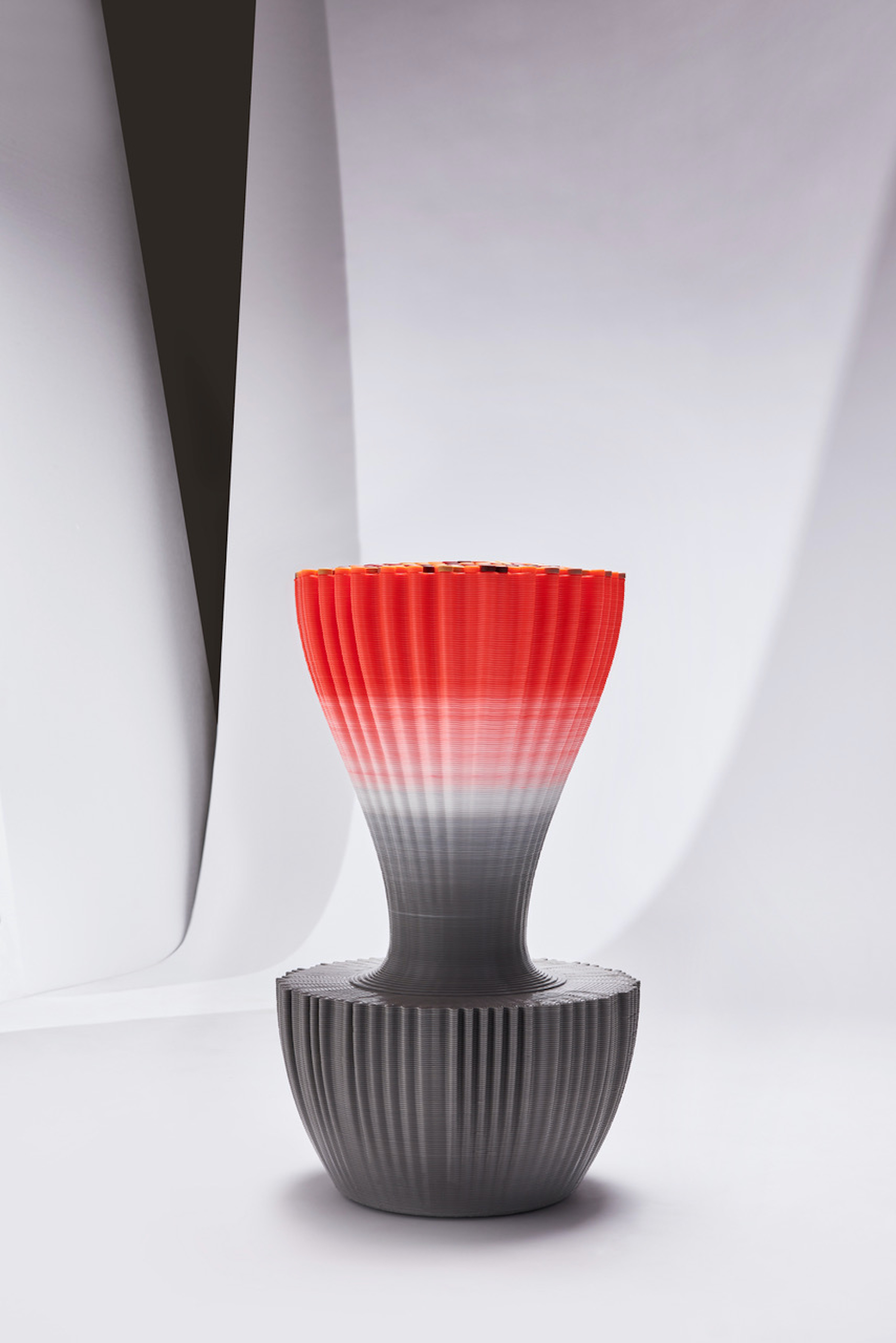
The Robotica stool by Lovegrove for Nagami takes form at the convergence of botany and robotics to coin a new approach to design to combine the natural programming in nature with artificial manufacturing from robotics. The high stool has an adaptable character to be a table with heat-proof silicone inserts in the seat to hold hot food, a plinth for a sculpture-TV, or a stand-alone aesthetic object
W*: How important is the sculptural element in design to you?
RL: I am a sculptor; designer is just a title. I’m more interested in the emotional presence of the object. Mine is a form of generative design, meaning they grow. If you think of old mechanical objects, they were bulky and oily and squeaky. But we’re in a new age now – with digital design, you press a button and this object grows out of nowhere. It is incredibly emotional. So, why would anyone do things the way they were done a hundred years ago? These perfume flasks may seem insignificant, but they test an ideology.
W*: Your research studies are concerned with the potential for creating organic shapes through technology. Here, in this futuristic shelter-style studio, nested in the heart of west London, your team are absorbed in some interesting work, involving insects.
RL: I really am in my own little bubble here; we try not to reference anything. At the moment we’re working on speculative aesthetics in vehicle design based on insects. Insects are sophisticated; their logic is in their lightness – they can drop from great heights and not break, and they open their cases and fly. They have this amazing dexterity and ongoing adaptation. So, we’re looking at designing various vehicles propelled by different systems.
W*: How do these research projects feed into your design thinking?
RL: I’m interested in first objects – the ones that are not contaminated by branding but answer to our visceral needs. Somewhere along the line we went from need to want. So, I’d like to know how to retain some of the instinctive positioning of that first object. The good news is, with such levels of innovation in this century, the chances of working on a first object is incredibly high. Wouldn’t it be marvellous to graduate to a place where you are involved in something that is so significant to help humanity?
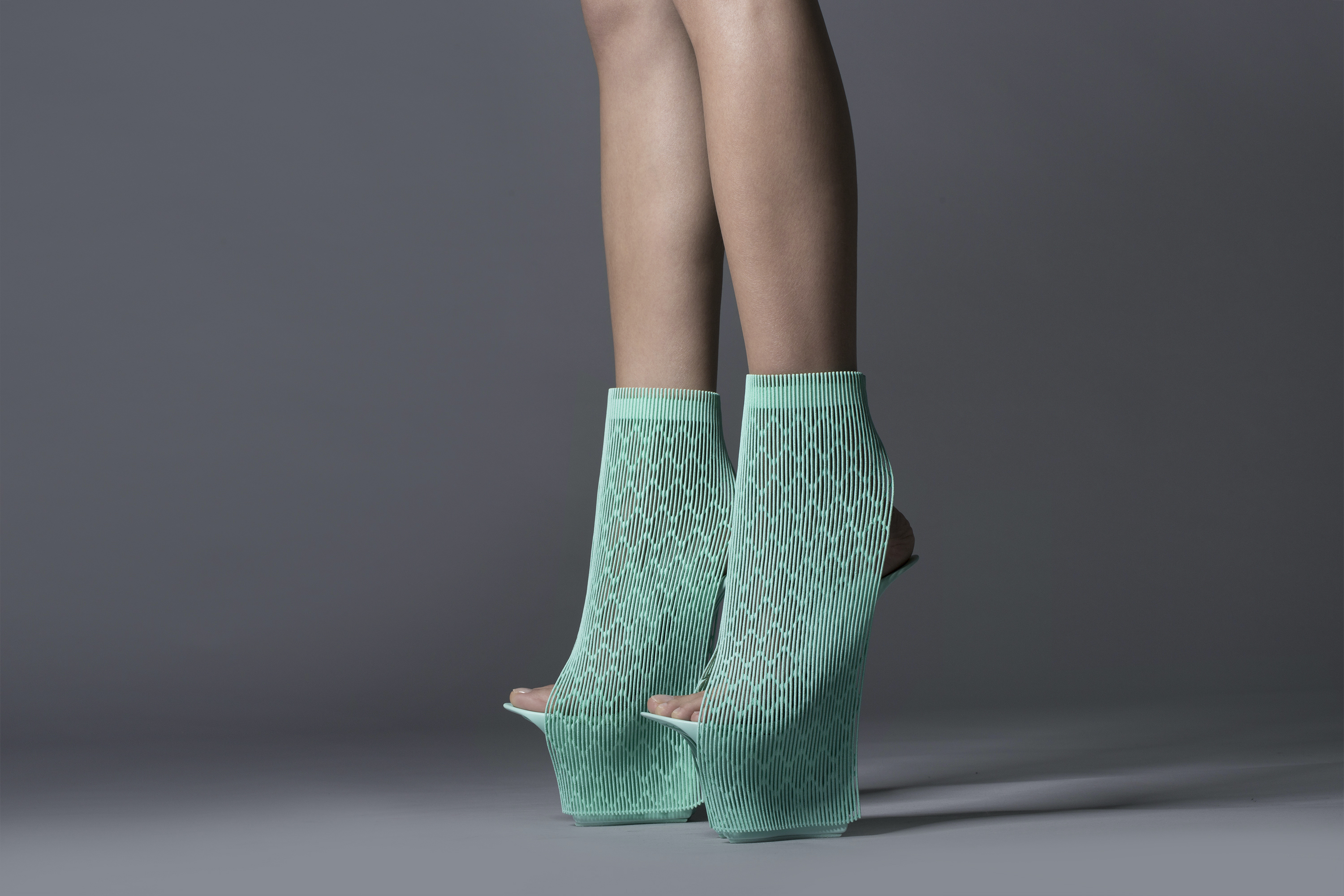
Working with United Nude for the 2015 ‘Re-inventing the Shoe’ project, Lovegrove’s ‘ILABO Shoes’ were designed to push the boundaries of 3D printing technology by creating shoes with sculptural freedom
W*: You talk of creating a new aesthetic for this century through the convergence of technology, materials science and intelligent organic forms. How do you see this shaping?
RL: I’ve been designing since I was 16, and there hasn’t been a day when I haven’t considered how things are made. Design has therefore become instinctive. You can get through this business being distant, copy and be lazy. But I won’t make anything that could be made even five years ago. I want people to be able to carbon date my designs, to remain relevant, not only in terms of process and materials but also the changes in our environment, social and cultural. What we do here is an aesthetic revolution - sculptural and technological.
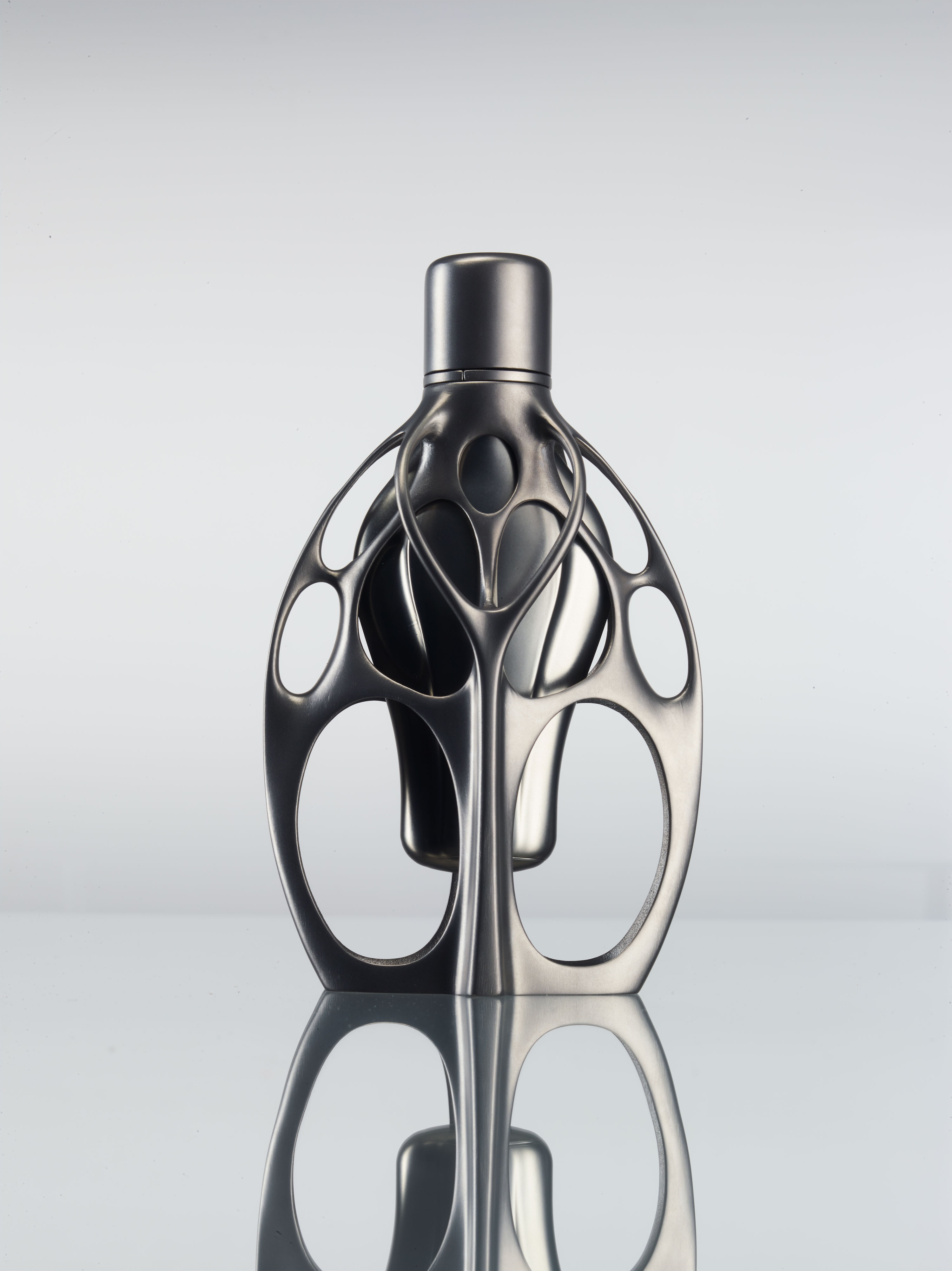
‘Fluid Symmetry’ is the second F1 haute perfume made of 3D printed blasted titanium and derived from the evolving organic lines of the cars aerodynamic design. The idea for Lovegrove is for the physics of natural forces, in unison with advanced materials, to produce a new form of technological bio-aesthetic for this century
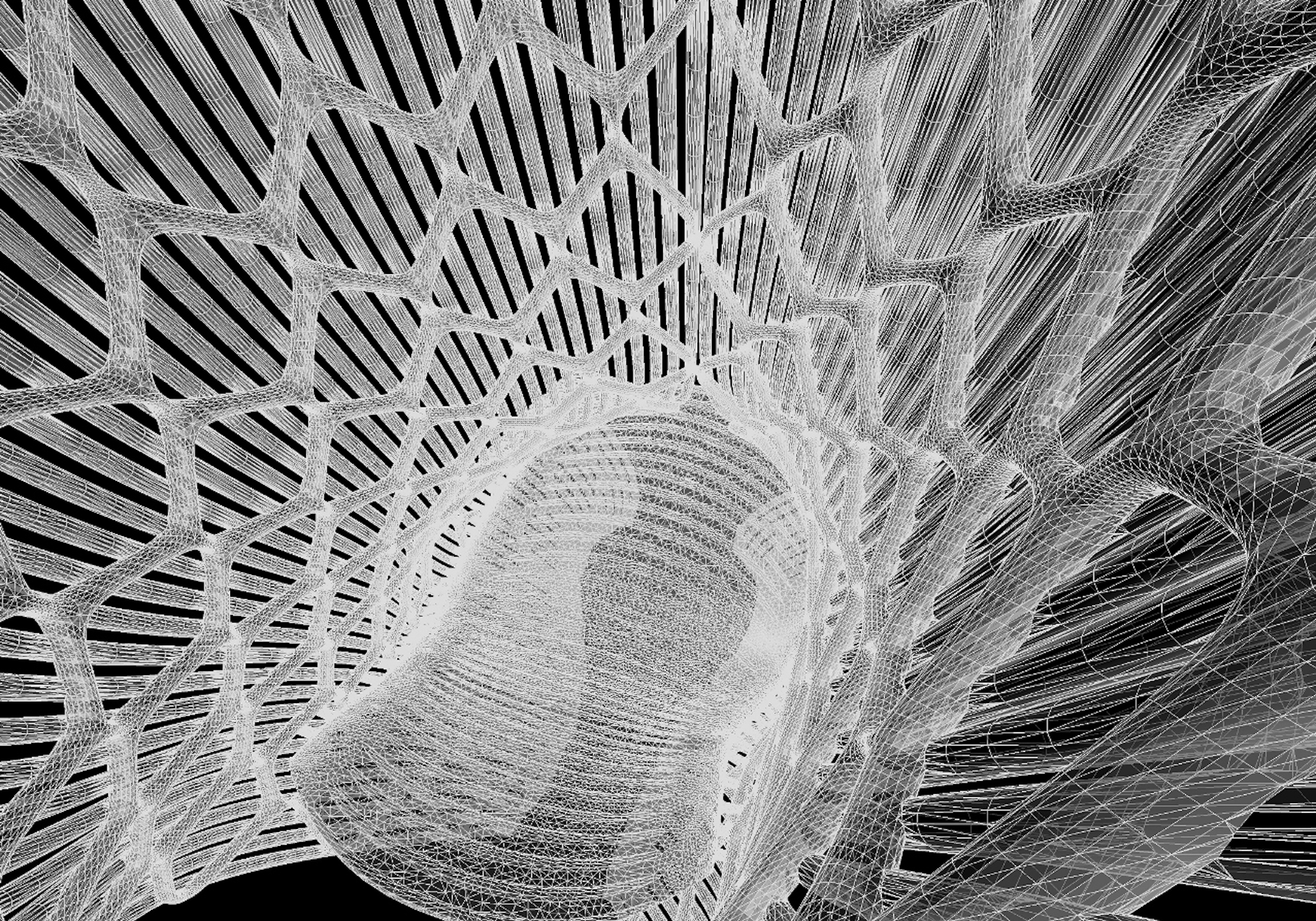
Working with United Nude for the 2015 ‘Re-inventing the Shoe’ project, Lovegrove’s ‘ILABO Shoes’ were designed to push the boundaries of 3D printing technology by creating shoes with sculptural freedom
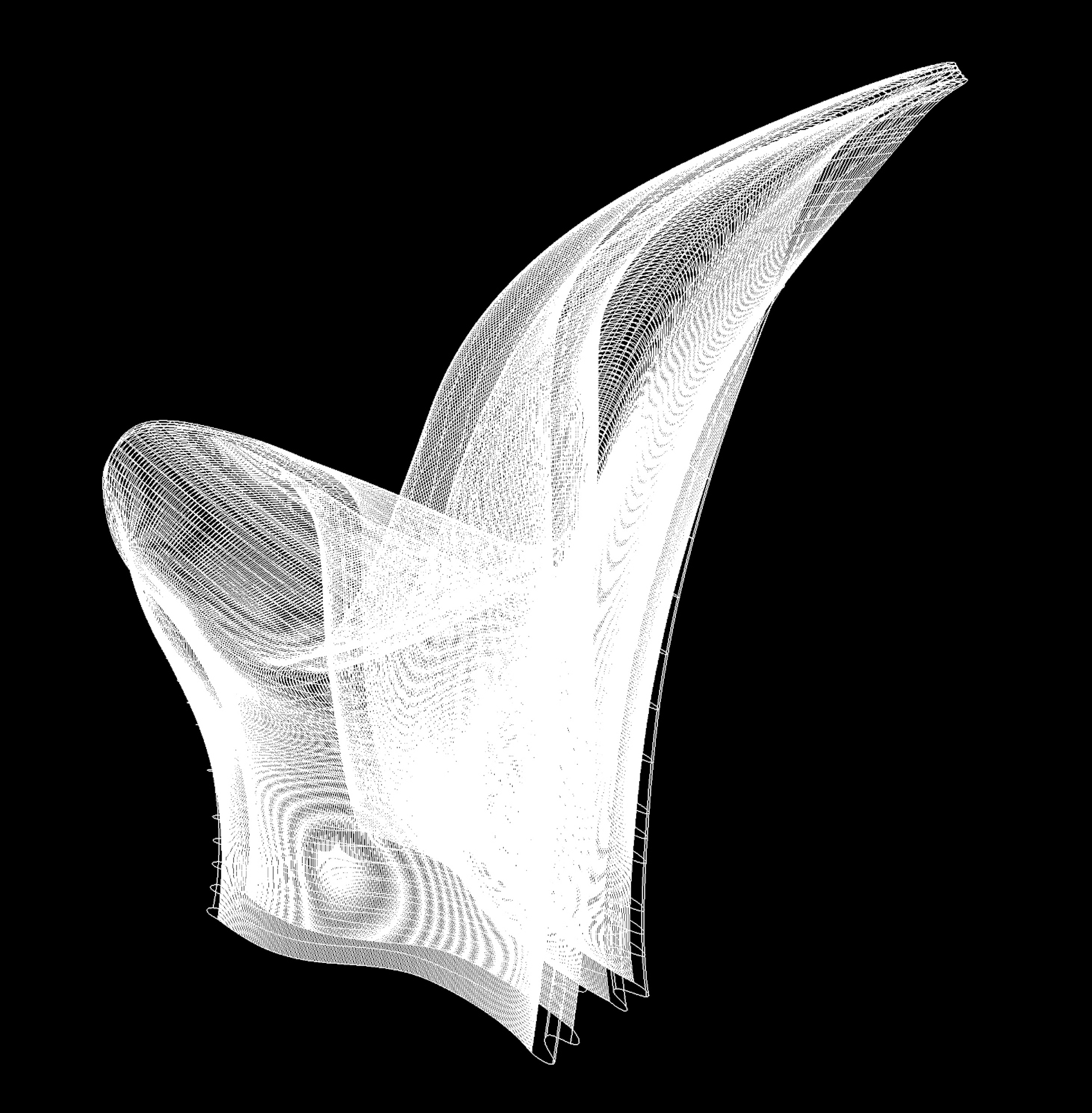
Working with United Nude for the 2015 ‘Re-inventing the Shoe’ project, Lovegrove’s ‘ILABO Shoes’ were designed to push the boundaries of 3D printing technology by creating shoes with sculptural freedom
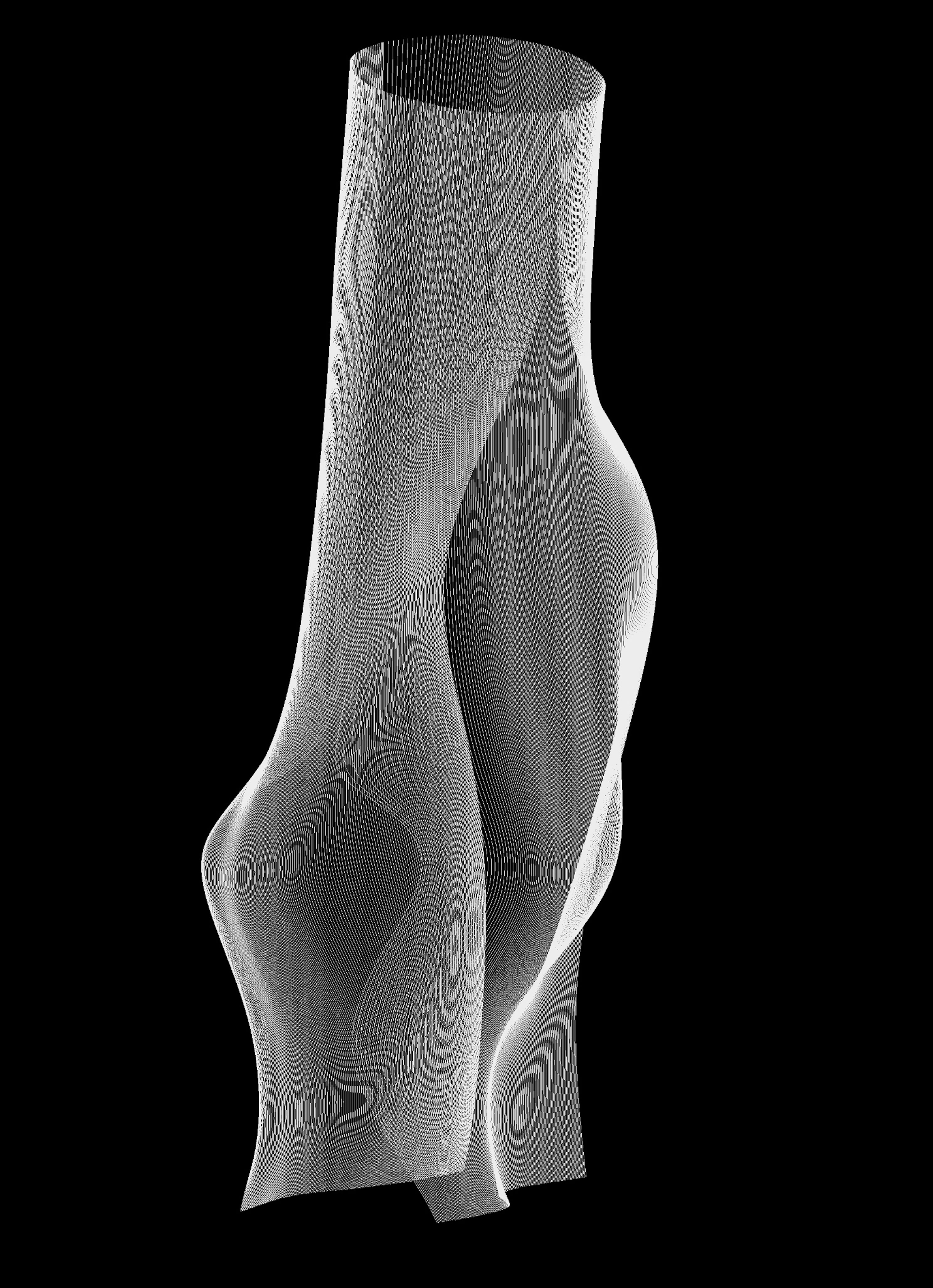
Working with United Nude for the 2015 ‘Re-inventing the Shoe’ project, Lovegrove’s ‘ILABO Shoes’ were designed to push the boundaries of 3D printing technology by creating shoes with sculptural freedom
INFORMATION
On sale from April 2020, the F1 haute perfume is available in three designs (Agile Embrace, Fluid Symmetry and Compact Suspension) made to 20 limited numbers and with five fragrance choices, priced at $10,000. A fourth techno polymeric resin-based flacon is available from retail stores from April 2020.
A writer and editor based in London, Nargess contributes to various international publications on all aspects of culture. She is editorial director on Voices, a US publication on wine, and has authored a few lifestyle books, including The Life Negroni.
-
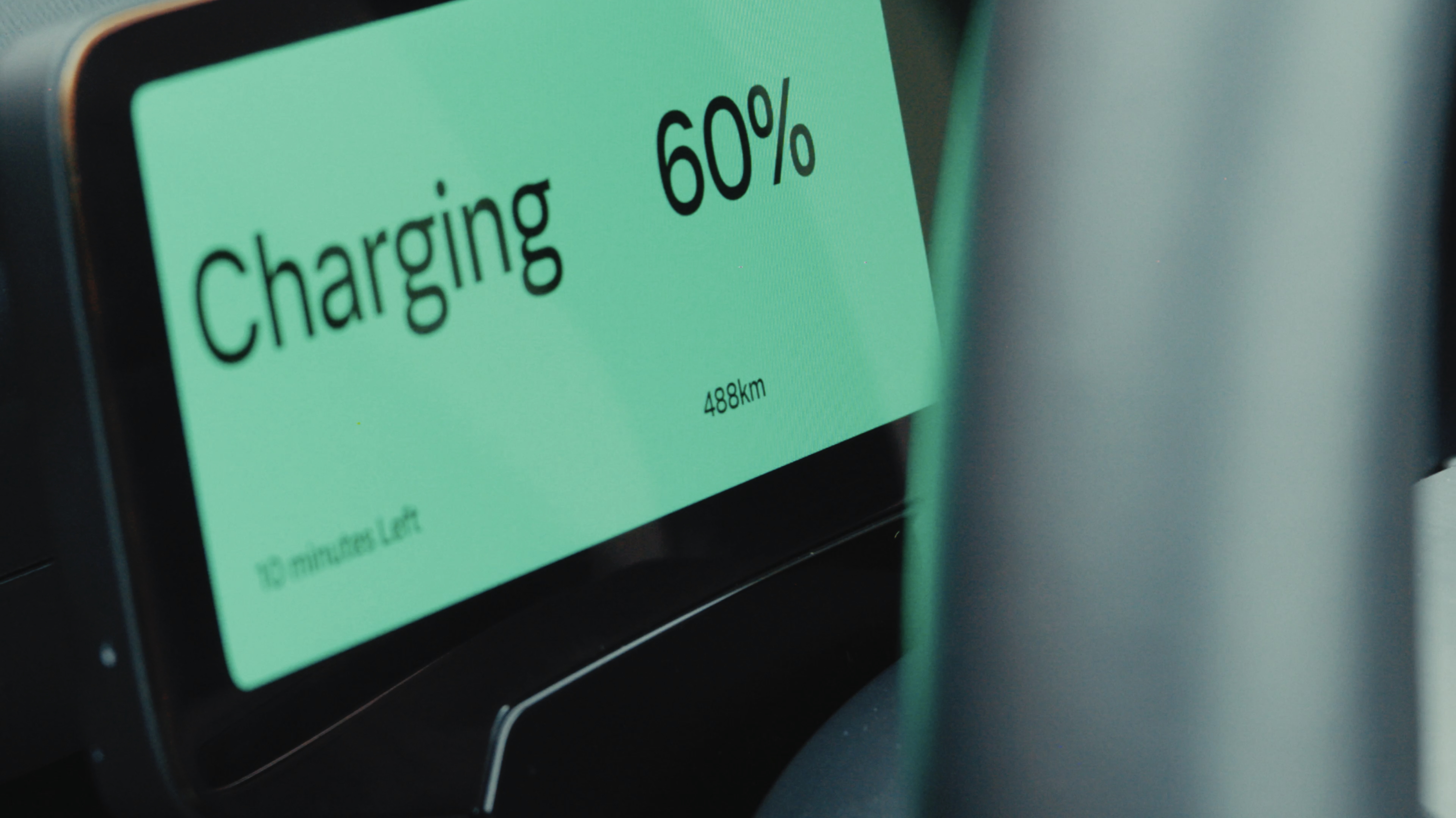 Volvo’s quest for safety has resulted in this new, ultra-legible in-car typeface, Volvo Centum
Volvo’s quest for safety has resulted in this new, ultra-legible in-car typeface, Volvo CentumDalton Maag designs a new sans serif typeface for the Swedish carmaker, Volvo Centum, building on the brand’s strong safety ethos
-
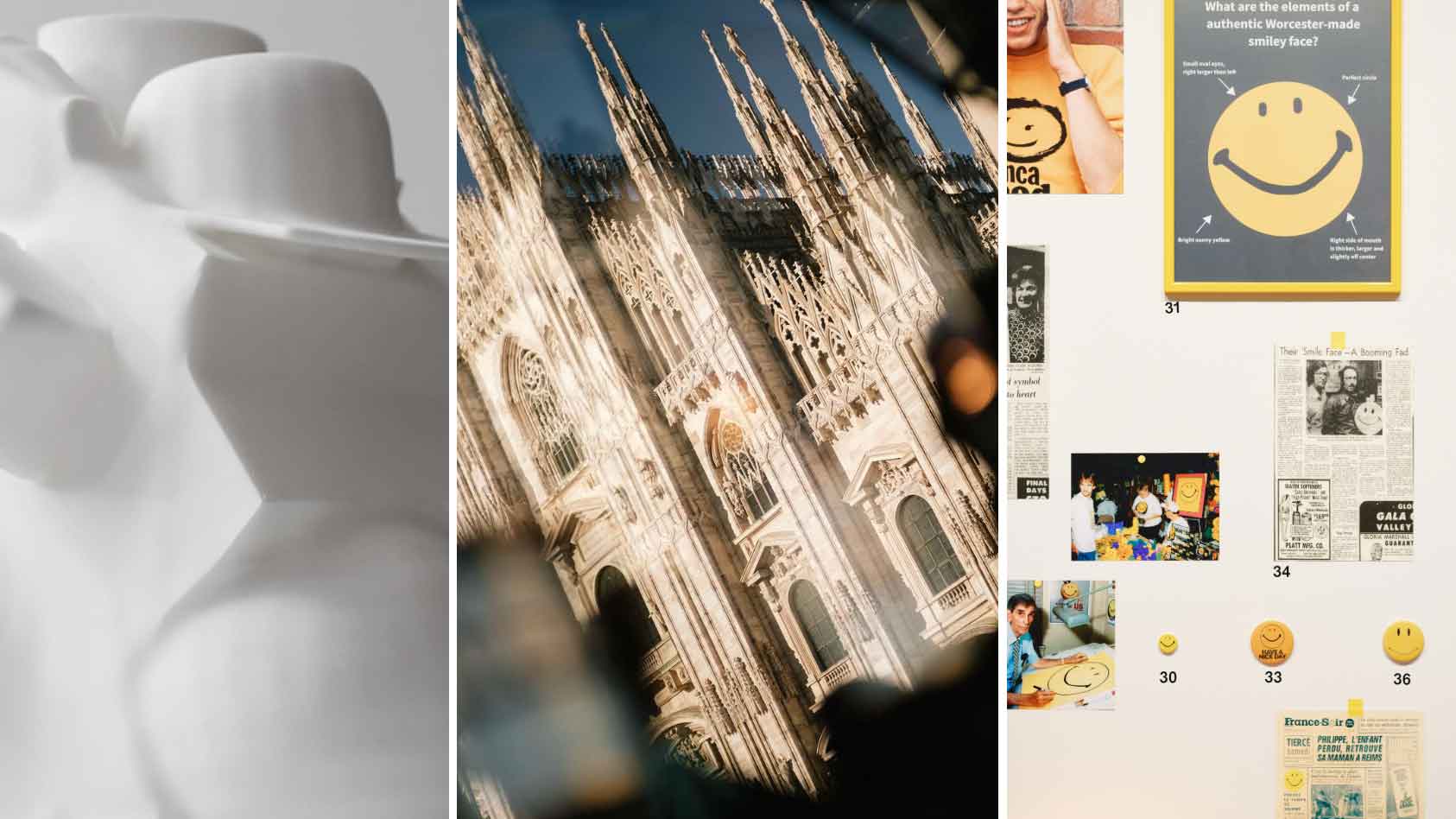 We asked six creative leaders to tell us their design predictions for the year ahead
We asked six creative leaders to tell us their design predictions for the year aheadWhat will be the trends shaping the design world in 2026? Six creative leaders share their creative predictions for next year, alongside some wise advice: be present, connect, embrace AI
-
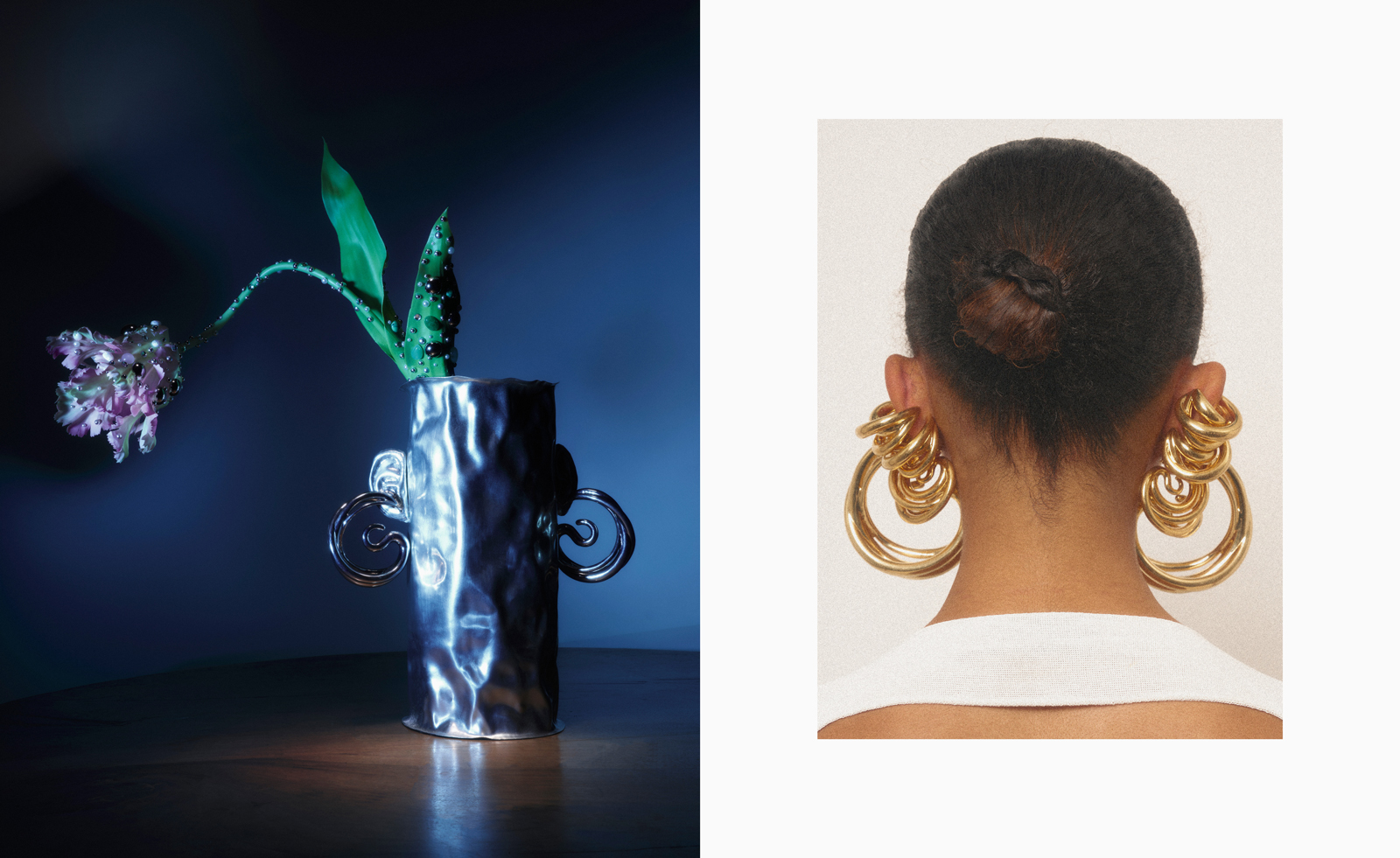 10 watch and jewellery moments that dazzled us in 2025
10 watch and jewellery moments that dazzled us in 2025From unexpected watch collaborations to eclectic materials and offbeat designs, here are the watch and jewellery moments we enjoyed this year
-
 Peugeot’s sparky 308 gets hybrid power and handsome lines
Peugeot’s sparky 308 gets hybrid power and handsome linesThe Peugeot 308 proves that mass-market design needn’t be dull, blending hybrid power with sharp lines and excellent detailing
-
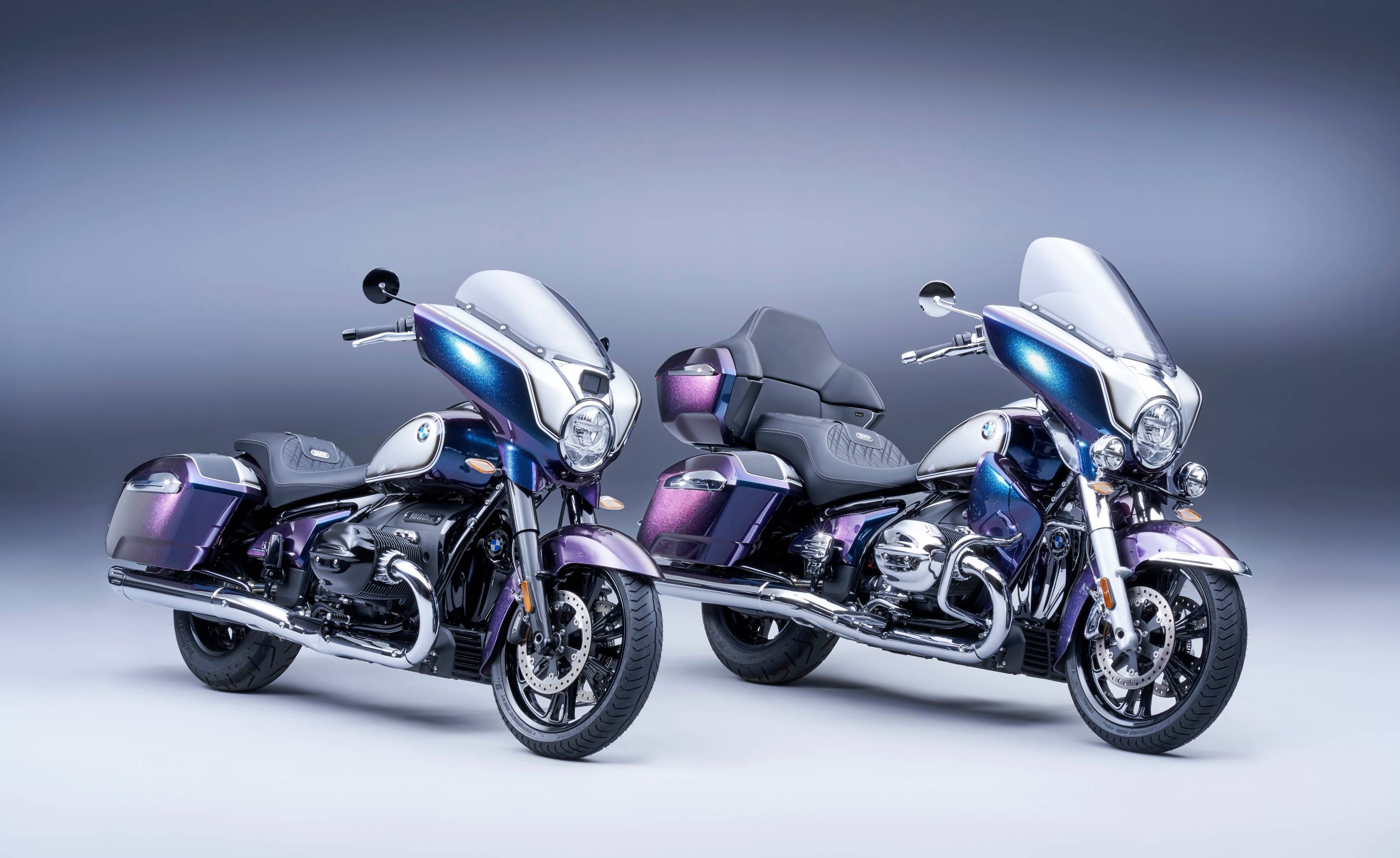 BMW Motorrad brings out the big guns for its newest cruisers
BMW Motorrad brings out the big guns for its newest cruisersBMW Motorrad R 18 Bagger and Transcontinental set the tone for high-voltage cruising with a brand collaboration with speaker specialist Marshall
-
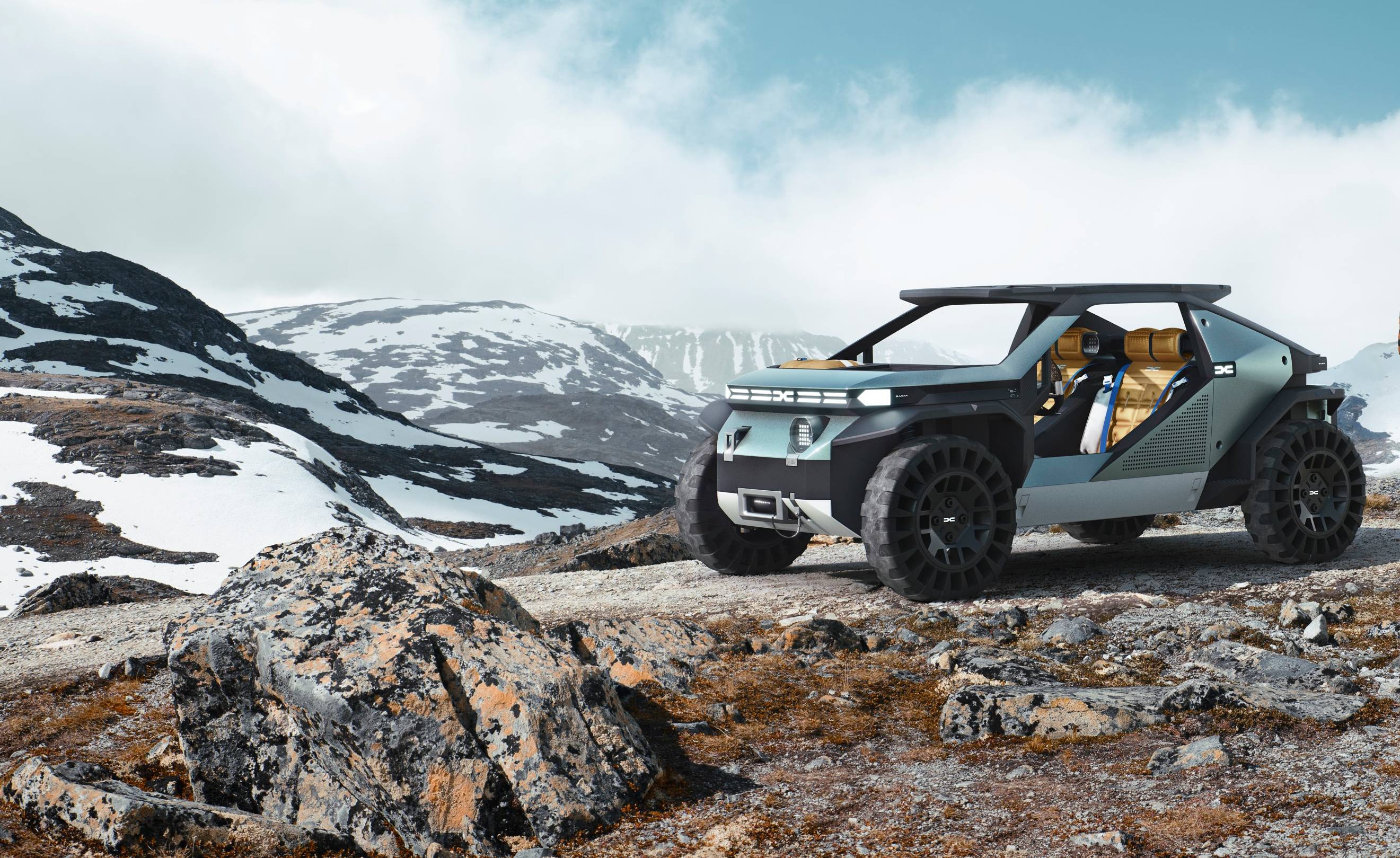 Dacia’s new Manifesto concept is a true outdoor utility vehicle
Dacia’s new Manifesto concept is a true outdoor utility vehicleUtilitarian auto brand Dacia sets a bold new agenda with its Manifesto, a concept car pitched at the active outdoor market
-
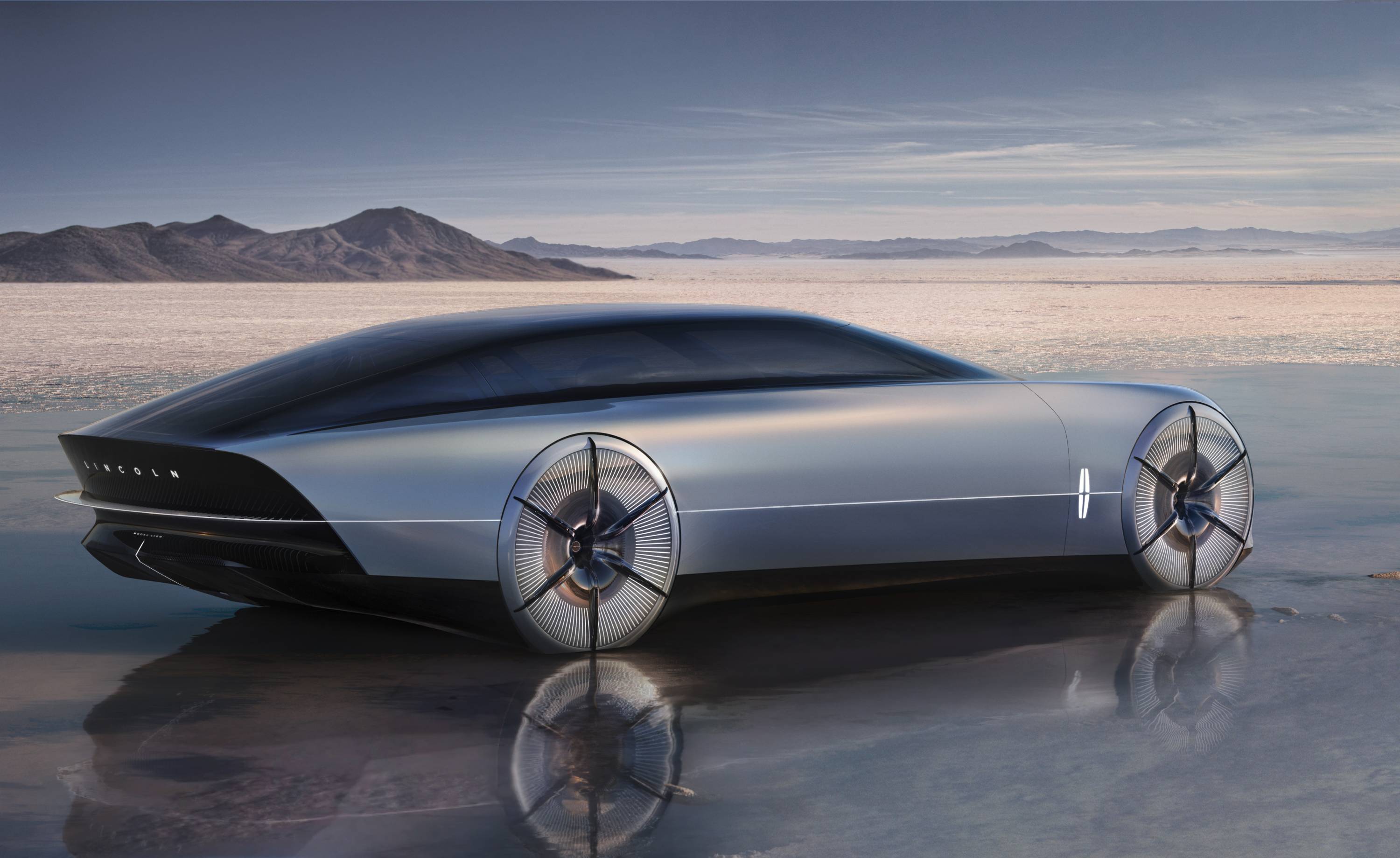 The sun sets on traditional supercars at California’s Monterey Car Week
The sun sets on traditional supercars at California’s Monterey Car WeekMonterey Car Week, the world’s most prestigious car gathering, is showcasing ever-more extravagant special editions, coachbuilt cars and all-new electric concepts. Here are seven key machines from 2022
-
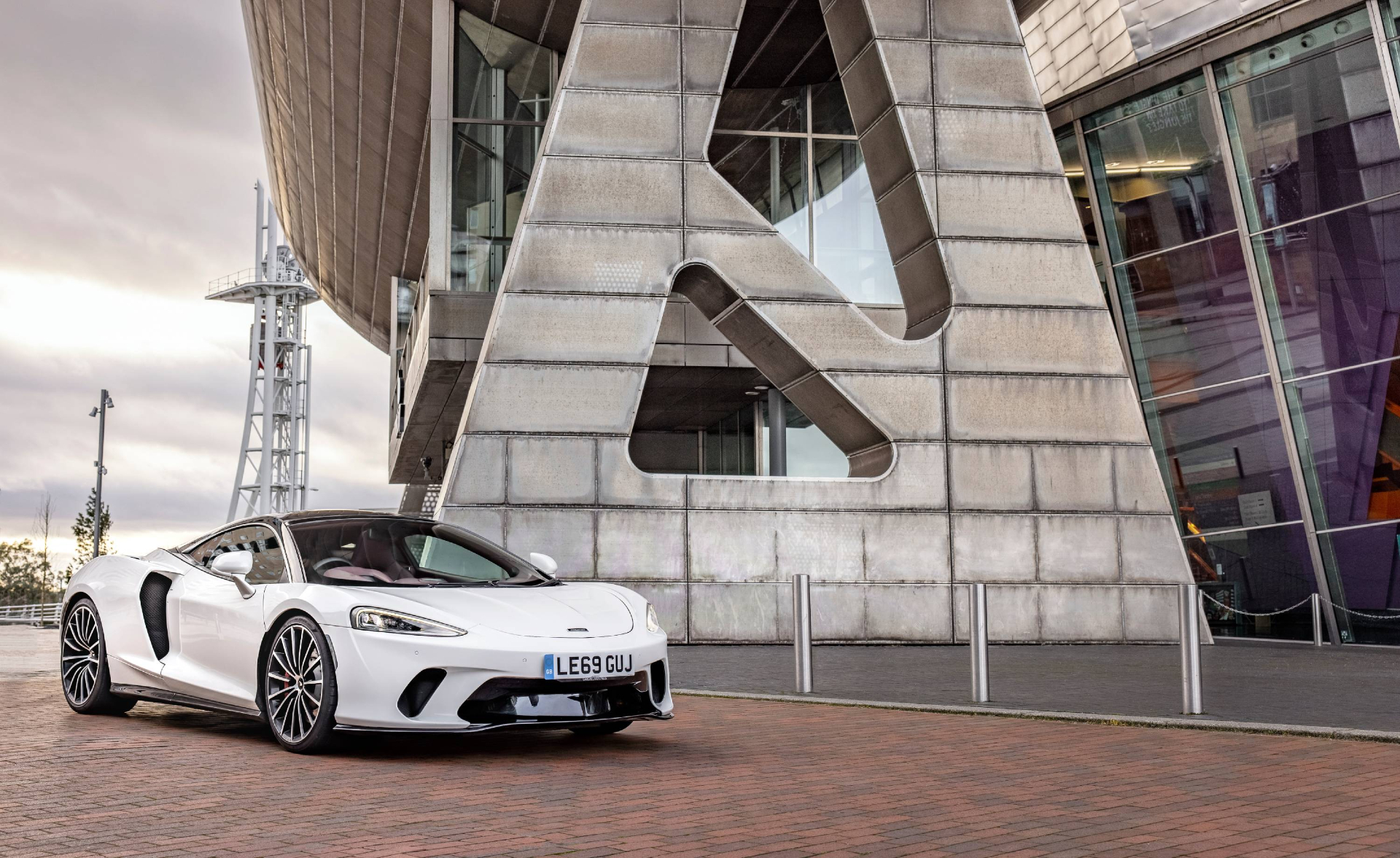 Is McLaren’s GT a sports car, a tourer, or the best of both?
Is McLaren’s GT a sports car, a tourer, or the best of both?The McLaren GT is a capable all-rounder dressed up in svelte supercar clothes. It might also be the last of its type
-
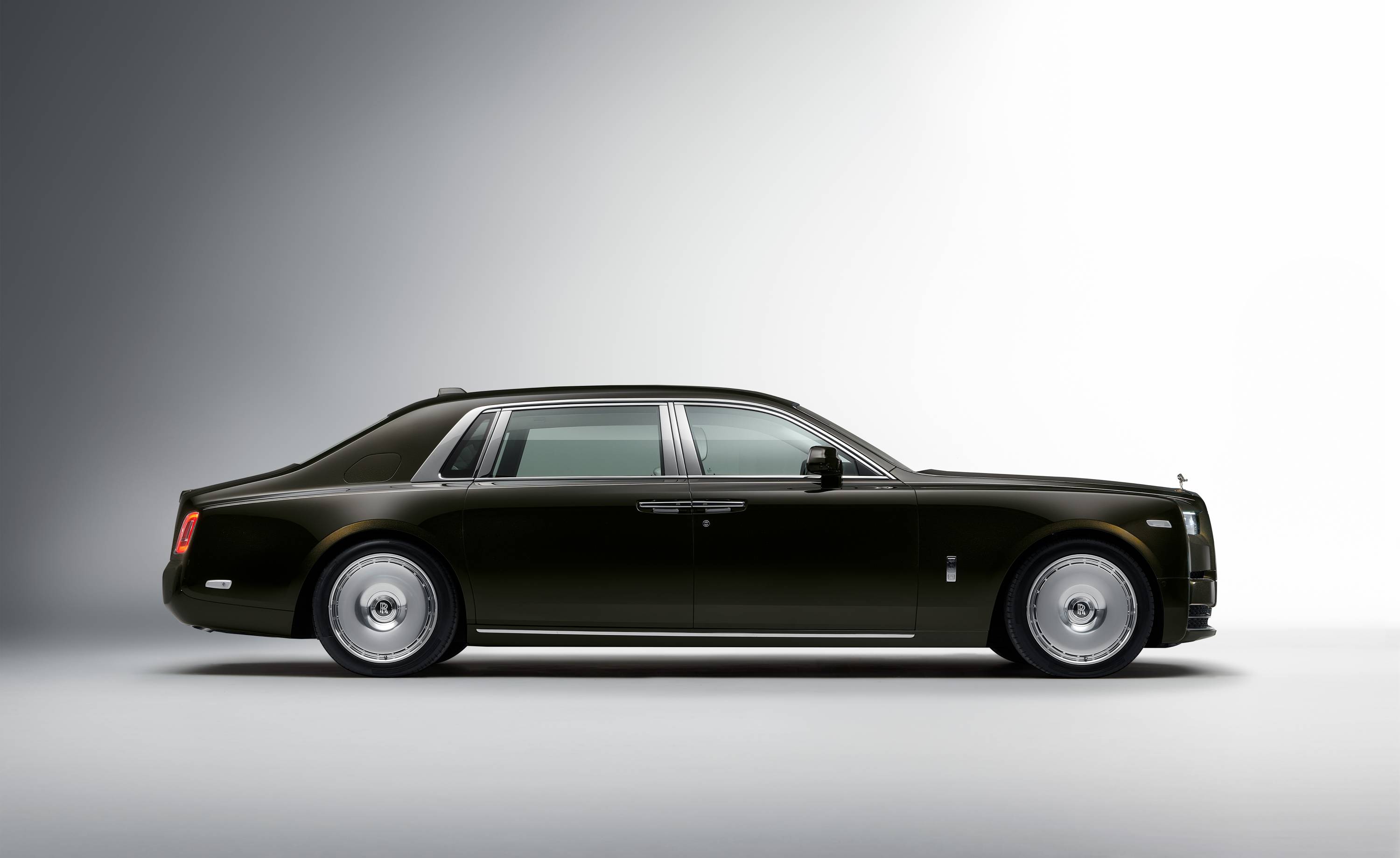 Rolls-Royce puts the Phantom back on its lofty pedestal
Rolls-Royce puts the Phantom back on its lofty pedestalA mid-life refresh ensures the flagship Rolls-Royce Phantom Series II is at the top of its game, a last hurrah for traditional engines before an electrified future
-
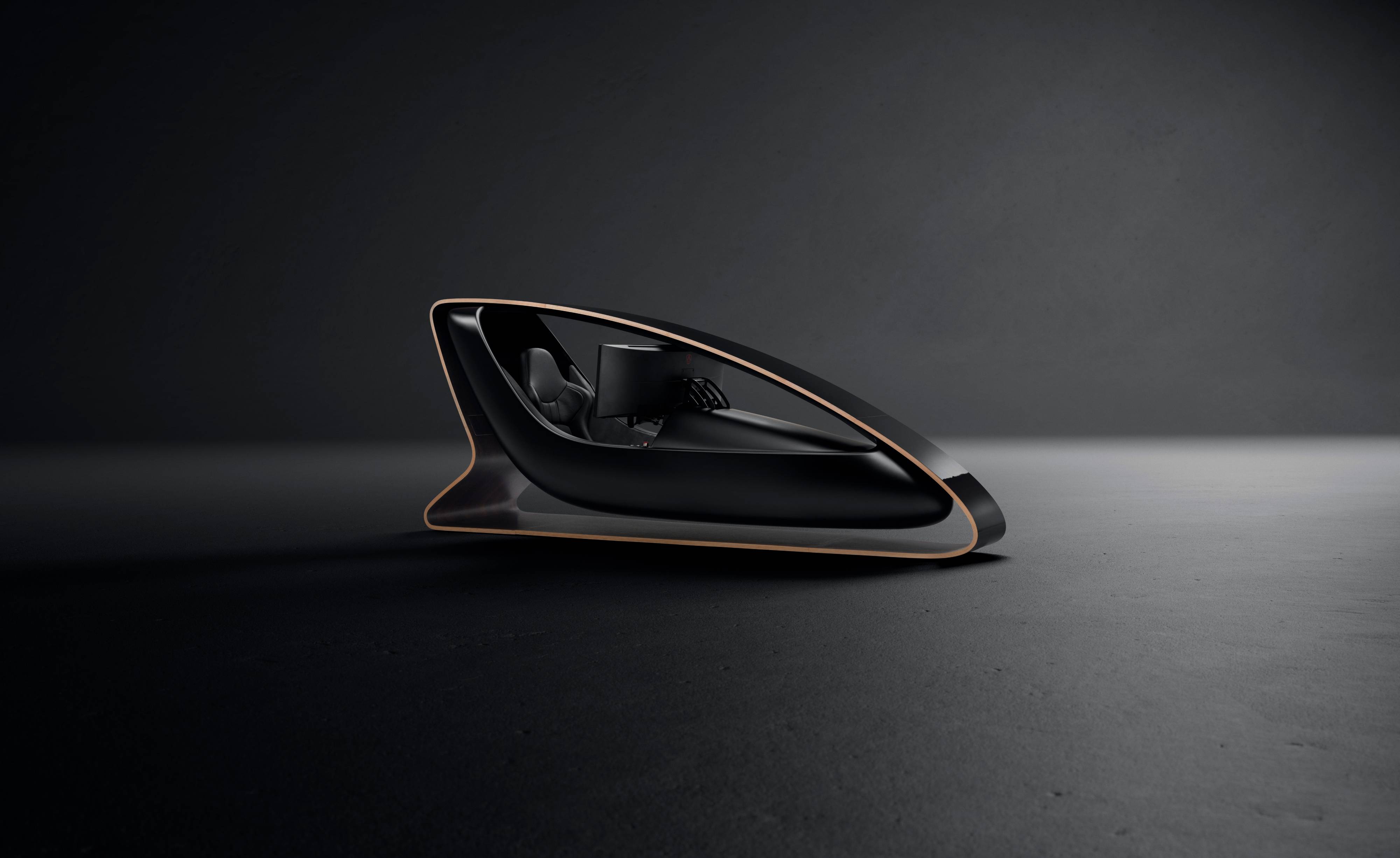 Prodrive’s new racing simulator is shaped by Callum to be front of the grid
Prodrive’s new racing simulator is shaped by Callum to be front of the gridThe racing simulator shapes up – this new design from Prodrive and Callum is honed for the high-end games room
-
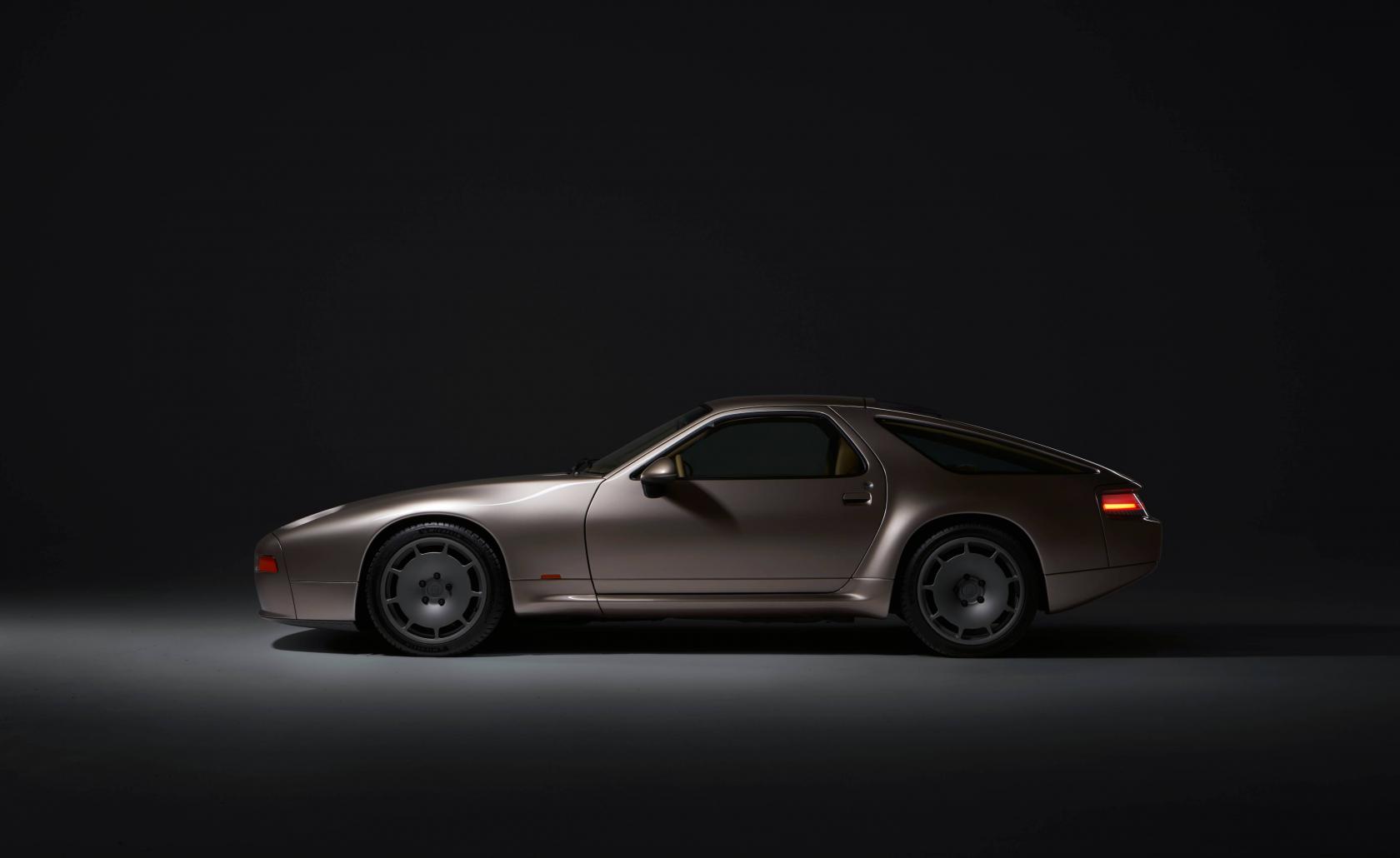 928 by Nardone Automotive: a restomod Porsche with Gallic verve and Italian style
928 by Nardone Automotive: a restomod Porsche with Gallic verve and Italian style928 by Nardone Automotive is a gracefully modernised version of Porsche’s endearingly different 928